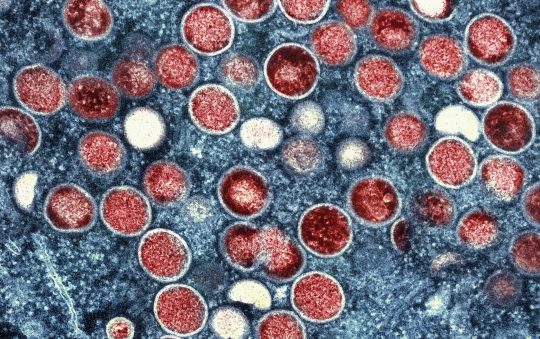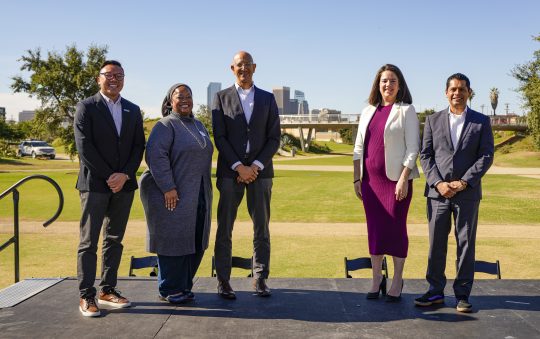It is time to make our communities healthy too

On June 15, the State of California will officially reopen. It’s a time when we can all exhale and give thanks for what we hope will mark the end of a terrible pandemic.
It’s also an opportunity to ensure that what happened to South L.A. during Covid never happens again.
Now is not the time to think small. We need to seize this moment to advocate for investments in community health that will ensure that South L.A. – and communities like it – are protected from future disasters.
Fortunately, we have leaders who seem ready to act. The Biden Administration is considering generation-changing investments in our communities – changes we should support.
One promising governmental proposal is investment in “infrastructure.” You might think of this as roads and bridges. But what if we think about infrastructure more expansively as those social goods that communities need to survive and thrive?
The administration is starting to do just that, expanding the notion of infrastructure to include community health, with proposed investment in home-based care for older and disabled adults.

New investments in infrastructure will not only help us close out the current pandemic, they will help us mitigate the next one. This could mean investments in clean air and water, housing, green spaces, and solutions to transportation and nutritional barriers that make some communities more vulnerable to chronic illness.
It seems like a no-brainer that these investments – clean air and water, healthy food, safe places to live and exercise – would result in better health. I’d like to see our leaders go even further and apply that same common sense thinking to investments in our health care system.
Lack of health care infrastructure is one reason Covid ravaged African American and Latino populations at three to four times the rates of Whites. It’s why South L.A. – despite having one of the largest Covid outbreaks in the county – has the fewest number of hospital beds per 100,000. It’s why we have a huge burden of chronic illness in our community – and a severe shortage of doctors to manage it.
Reversing these shortages requires grappling with our nation’s most glaring structural health inequity: Medicaid. This public insurance program for low-income Americans pays significantly lower rates than Medicare and commercial insurance for the same health care services. This payment imbalance has led to health care deficits of all kinds – from doctors, to hospital beds, to equipment, to the preventive care that might have saved more Covid patients’ lives in our communities.
How do we build this infrastructure? Again – it’s a no-brainer. We must invest.
It’s why my organization is transitioning from a hospital to an integrated health system: At MLK Community Healthcare, our goal is to broaden our focus from crisis care to accessible, community-based prevention and disease management.
Here’s what this “new” health care infrastructure looks like:
It pays doctors enough to work in our community – something we have started with visionary philanthropy, but which requires a public solution to sustain and scale.
It looks like primary and specialty care doctors’ offices located close to where people live and work, so no one has to travel miles to access quality health care. Our affiliated medical practices are conveniently located in easily accessible retail shopping centers.
It means that treatment for behavioral health conditions is as easy to access as other types of health care. We are integrating behavioral health care into the locations where we offer physical health care.
It includes virtual and home health programs that take care into the homes of patients who often lack transportation. We’re doing this now and we hope to expand these programs over time.
It is community-based health education and nutrition programs, such as our “Recipe for Health” program that gives diabetic patients weekly boxes of fresh food, cooking lessons, and nutrition education to support healthy eating.
It looks like our new street medicine program, which will bring mobile care to South L.A.’s unhoused population in a way that ensures they don’t slip through the cracks.
It looks like partnerships with community groups to give patients access to safe housing, transportation, food, employment opportunities, and more.
It looks like investments in supportive resources unlike anything we have in our current health care system. But if we push hard enough; it could look like our nation’s future.
We urge the Biden Administration, our state policymakers, and national leaders to invest in community health and the underlying infrastructure needed in underserved communities to bring it to scale. This means investing in the facilities, equipment, and provider training needed for quality health care.
This year, the State of California has a budget surplus, an unexpected windfall from industry’s success during the pandemic. At the same time, the federal government is making robust investments through economic stimulus initiatives. Let’s use these funds to close the gaps in our current system.
This is our chance to end the separate and unequal system of care that created and sustains racial disparities in health. This is our chance to undo decades of neglect and underinvestment in our community.
We shouldn’t allow the lessons of the past year – and the vast potential of the future – to pass us by. It’s time to invest in making our communities healthy too.







